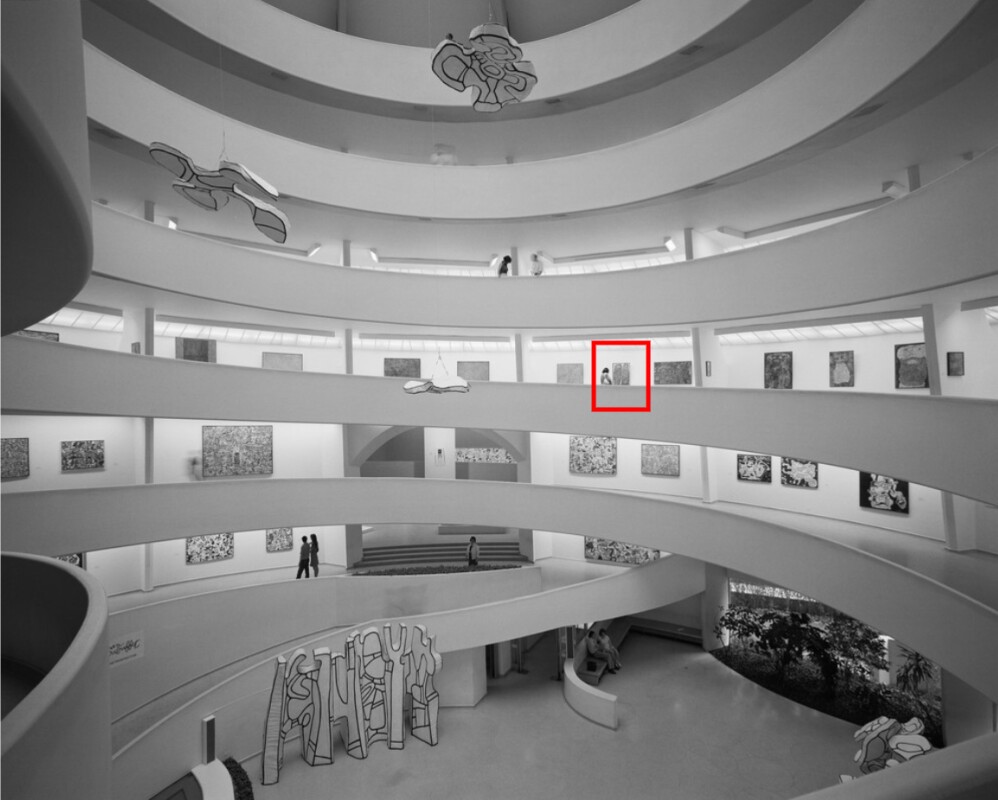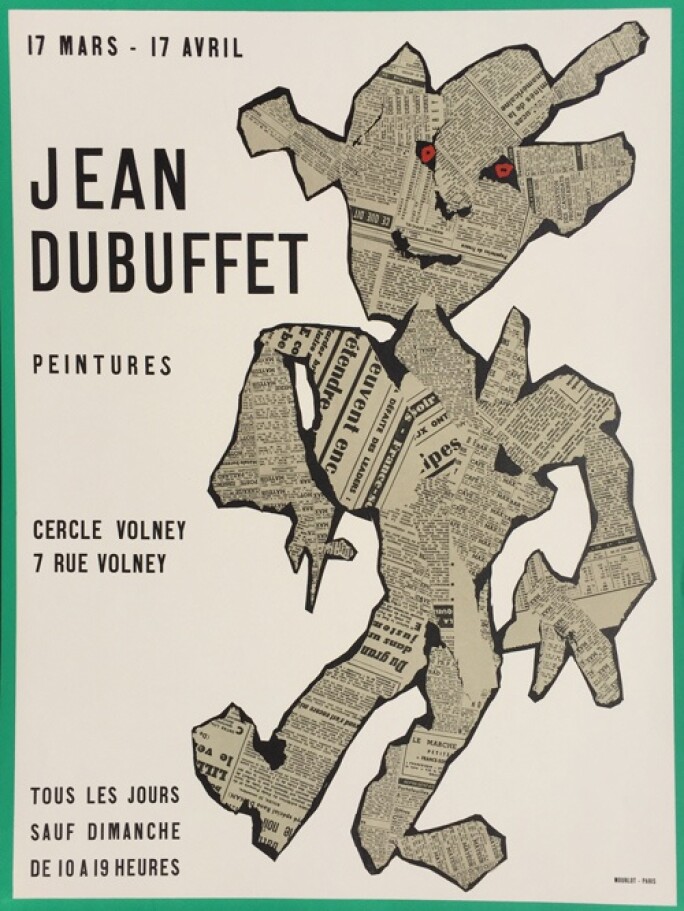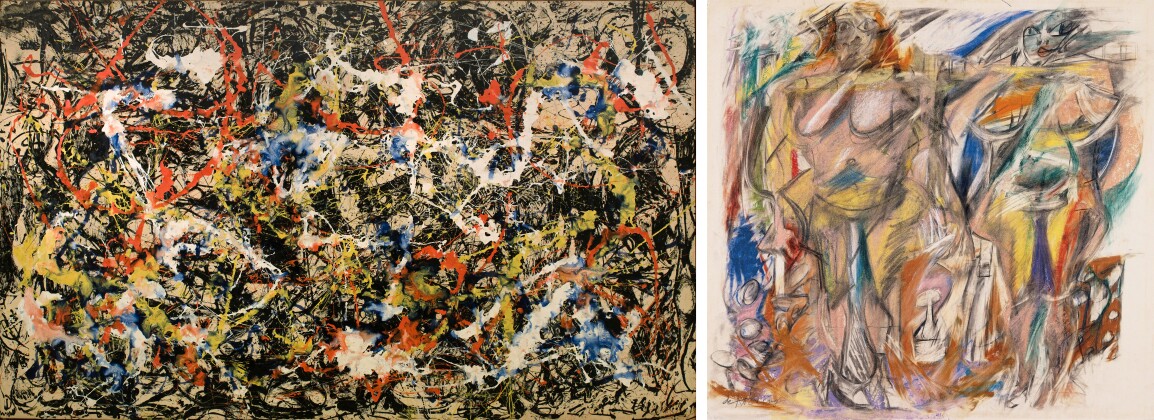“Art, then, returns to its real function, which is much more significant than creating shapes and colours agreeable for the so-called pleasure of the eyes… Art addresses itself to the mind, and not to the eyes.”

Executed in 1954, Jean Dubuffet’s L'Age a écrit sur leurs visages is a striking double portrait from a landmark year in the artist’s career. Dubuffet had become increasingly engaged with ideas of collective humanity, and of faces as maps – etched not by his individual hand, but by the shared experiences of life and the impacts of society itself. Set against a deep midnight blue, the artist naively renders two heads tightly framed within the canvas’ constraints that, as the title poetically writes, each have ‘age written on their faces.’ In 1954, Dubuffet split his time between Paris, where his studio was based, and the South of France, to spend time with his wife who was then recuperating from tuberculosis. Dubuffet underscores the topographical quality of their faces – aged, cracked, and indexed by time but without sentimentality. As much a portrait of Dubuffet and his wife, L'Age a écrit sur leurs visages also functions as a collective portrait of universal human experiences. Dubuffet puts into painting the unavoidably shared experience of aging, underscoring that time and identity are mutually inscribed on the surface of the body. Affirming the work’s importance in Dubuffet’s lauded oeuvre, L'Age a écrit sur leurs visages has been exhibited widely, including the Solomon R. Guggenheim, New York; the Centre Pompidou, Paris; and the Galleria Nazionale de d’Arte Moderna, Rome.


To achieve the distinctly textured surfaces of his paintings, Dubuffet worked with the aid of a palette knife, scraping back then reapplying layers of paint to achieve the highly sophisticated mottling of the present work. Charting a progression from the thick impastos of the Haute Pâte works from the 1940s, to the Texturologies of the late 1950s, the present work sits within his Assemblages d’Empreintes in which he largely transformed natural materials into collage. Through these works, Dubuffet chartered a radical expansion of pictorial language and material experimentation. A spirit encapsulated within L'Age a écrit sur leurs visages, Dubuffet exhibited the work the same year it was painted at his retrospective at the Cercle Volney. Marking his return to France following his time in New York during 1951-52, the present work emanates with a quiet poignancy and material intensity that persisted across his oeuvre.
“Dubuffet’s beauty rejects the perfumed pretensions of the Academy and acknowledges, with brute force, our fundamental precariousness: that we are all just matter, like the Milky Way.”

Albright-Knox Gallery, Buffalo
Image: © Albright Knox Art Gallery/Art Resource, NY/Scala, Florence
Artwork: © The Pollock-Krasner Foundation ARS, NY and DACS, London 2025
Right: Willem de Kooning, Two Women with Still Life, 1952. Museum of Contemporary Art, Los Angeles. Art © 2025 The Willem de Kooning Foundation / DACS 2025
With his quintessentially naïf and gesturally raw figuration, Dubuffet derived inspiration from primitive and outsider art, charting new stylistic territory in figurative abstraction. Painted in the aftermath of the Second World War, Dubuffet sought an artistic approach that rid visual art of its heroic aims to arrive at an entirely new and unique visual lexicon. Like his contemporaries Wols and Fautrier, Dubuffet embraced an intuitive style that championed spontaneity, much like the automatic tenets of Surrealism and rejected formal Western ideals of beauty. Influenced by Hans Brinzhorn’s book Artistry of the Mentally Ill, Dubuffet coined the term Art Brut, meaning ‘raw art’ or ‘outsider art,’ as his classification for a mode of art produced by non-professionals working outside the aesthetic norm. Bearing similarities to Picasso’s derivation of inspiration from African Art at the turn of the century, Dubuffet was especially drawn to so-called primitive art, as well as that produced by children, derelicts and sufferers of mental illness. He believed that these modes of visual expression were closer to the truth of the subliminal unconscious, resulting in a more realistic artistic language devoid of unnecessary aesthetic ornamentation. With its distinctly rendered figures, L'Age a écrit sur leurs visages reflects the tenets of Art Brut and Dubuffet’s own painterly mastery through his inspired view of the world around him.